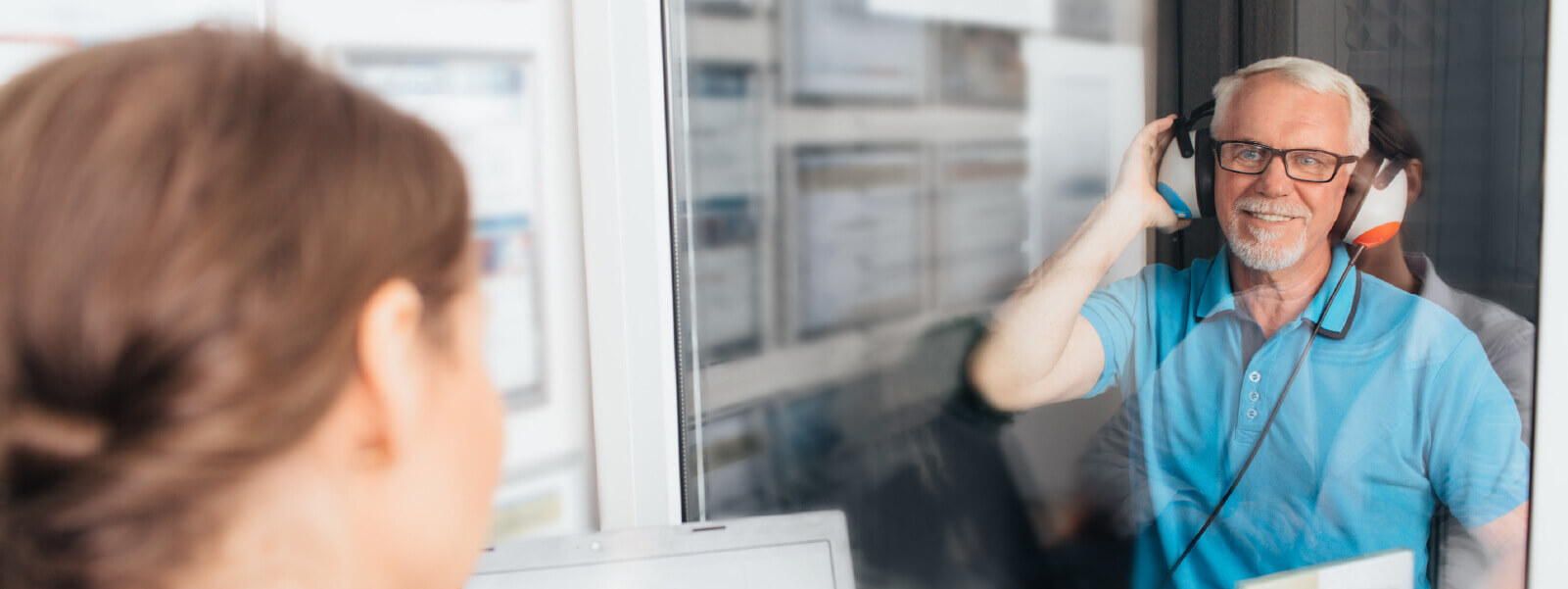MONITOR AND PROTECT EMPLOYEE'S HEARING
Audiometric testing is most commonly used in safety-sensitive industries when an employee is exposed to loud noises in which hearing loss or impairment could occur. According to OSHA’s hearing conservation program, employers must monitor noise exposure levels for those exposed to noise at or above 85 decibels (dB) averaged over 8 working hours, or an 8-hour time-weighted average (TWA). It’s imperative that employers with employees in such working conditions monitor their hearing over time to ensure their safety and implement an audiometric testing program in the workplace. When establishing and maintaining an audiometric testing program, employers must include baseline audiograms, annual audiograms, training, and follow-up procedures.
BASELINE AUDIOGRAMS
A baseline audiogram is used in reference to compare future audiograms and must be completed within six months of the employee’s initial exposure at or above an 8-hour TWA of 85 dB. Exceptions are made when an employee chooses to use a mobile test van for audiograms, which must be completed within one year after an employee's first exposure to workplace noise at or above a TWA of 85 dB.
ANNUAL AUDIOGRAMS
Annual audiograms must be provided within one year of the baseline audiogram and maintained on a yearly basis thereafter. This test is to determine whether the employee has had any loss or impairment of hearing from the baseline audiogram. It’s vital to ensure the timeliness of this test to detect any hearing impairment or a standard threshold shift (STS) as soon as possible. An STS is an average shift of 10 dB or more at 2,000, 3,000, and 4,000 hertz in either ear.
TRAINING
Employee training is imperative to encourage the use of hearing protection and audiogram testing to protect their hearing. Employees exposed to TWAs of 85 dB and above must be trained on an annual basis and cover:
- Purpose of protectors
- Advantages and disadvantages of the different types of hearing protectors
- Selection, fit, and care of protectors
- Purpose and procedures of audiometric testing
FOLLOW-UP PROCEDURES
Follow-up procedures must include the fitting or refitting of an employee showing an STS with adequate hearing protectors and demonstrate and require the employee to use them. If an employee’s test results show an STS, the employer is required to notify that employee within 21 days. Depending on the results, some employees may require additional testing to ensure that the problem isn’t caused or aggravated by wearing the hearing protectors. If the medical problem is not related to the hearing protectors, then the employee may be asked to consult a physician.
WHEN IS AN EMPLOYEE REQUIRED TO WEAR HEARING PROTECTORS?
Employers must provide hearing protectors to employees exposed to 8-hour TWA noise levels of 85 dB or above and ensure access to hearing protectors before they experience any hearing loss. According to OSHA, employees must wear hearing protectors under the following conditions:
- For any period exceeding 6 months from the time they are first exposed to 8-hour TWA noise levels of 85 dB or above until they receive their baseline audiograms if these tests are delayed due to mobile test van scheduling;
- If they have incurred standard threshold shifts that demonstrate they are susceptible to noise; and
- If they are exposed to noise over the permissible exposure limit of 90 dB over an 8-hour TWA.
LEARN MORE ABOUT DISA’S OCCUPATIONAL HEALTH AUDIOMETRIC TESTING
Call us at 281-673-2530 or contact us online below.

